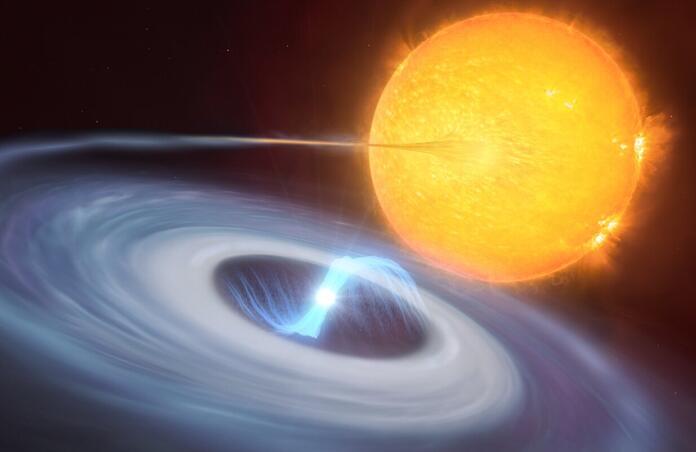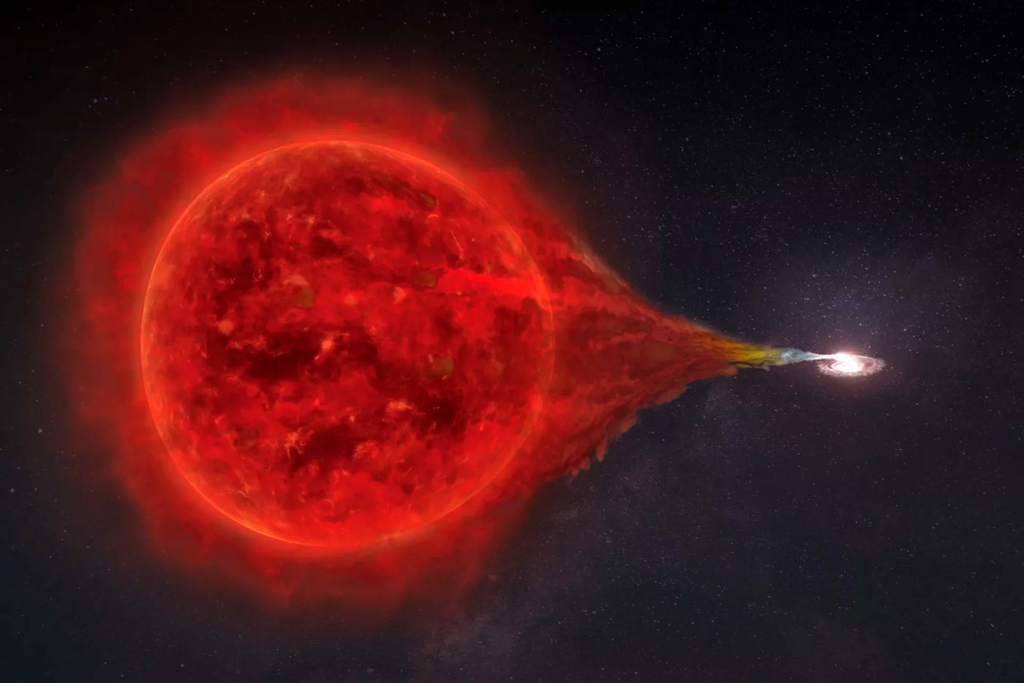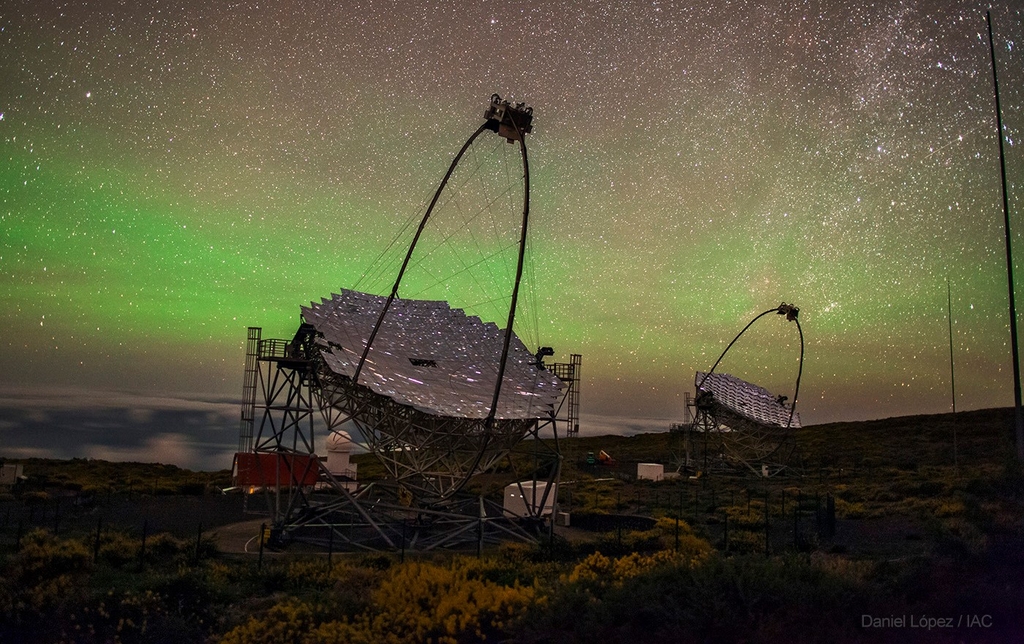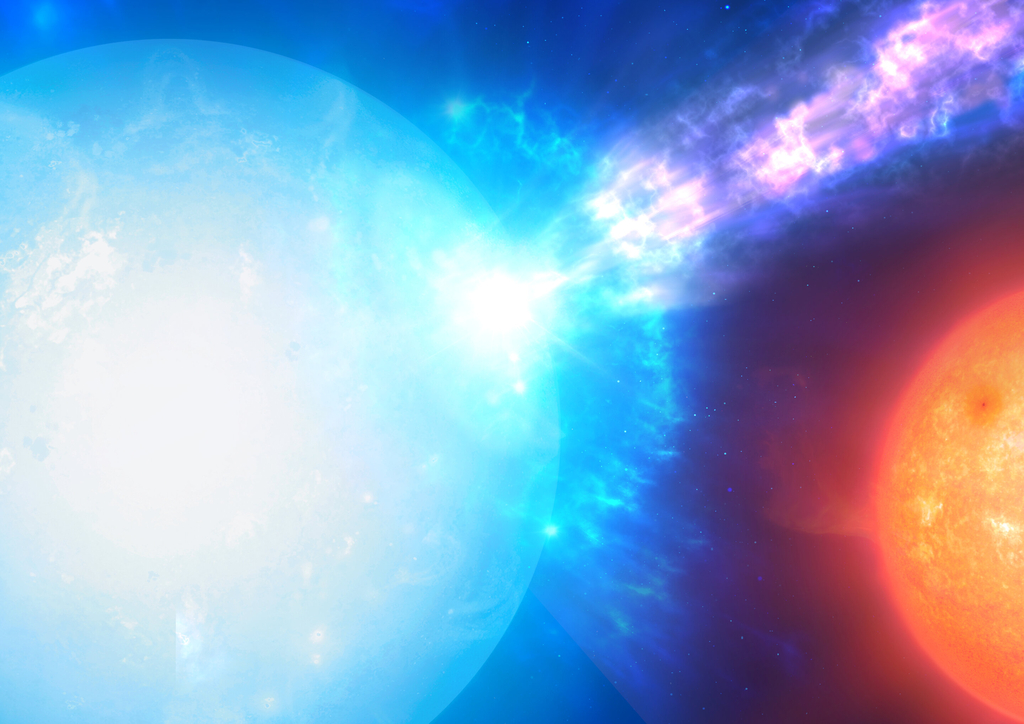Astronomers discover a new type of nova !

Whether super, kilo or micro, novae are fascinating transient events.
Nova simply means new in Latin, and refers to an apparently new star in the night sky. Novae are transient events that fade after a few weeks or months. Classical novae occur in binary systems with a white dwarf accreting matter from a companion main sequence or giant star: as it accretes, it heats up until a runaway fusion reaction is triggered, which causes the atmosphere of the white dwarf to be ejected in a bright flash of light. 1000 times more luminous than that are kilonovae, the merging of two neutron stars or a black hole and a neutron star. The most luminous is the supernova, a stellar explosion at the end of a massive star’s life. It might seem surprising that those are brighter than kilonovae, but this is because we are still talking about optical wavelengths – kilonovae are actually more “productive” in gravitational waves as well as gamma-ray bursts, which are the most energetic events we know of after the Big Bang itself.

It is also gamma rays that were observed coming from the nova RS Ophiuchi. Using the two Major Atmospheric Gamma Imaging Cherenkov (MAGIC) telescopes, astronomers detected high-energy radiation emanating from this source, which is a recurring nova, i.e., it repeatedly undergoes the classical nova processes as the white dwarf remains intact and starts accreting again from its companion after the ejection of the outer layers of its atmosphere. For RS Ophiuchi, the cycle lasts 15 years and the last explosion was in 2021.

Now, astronomers analysed the MAGIC data to determine that the shock wave from the nova explosion accelerated particles in the medium surrounding the RS Ophiuchi system to nearly the speed of light. The gamma ray emissions that were measured correspond to accelerated protons (hydrogen nuclei) interacting with the surroundings, which at those speeds and energies are called cosmic rays. While the main creators of cosmic rays remain supernovae as their shock fronts are much more violent, the finding that novae are local sources of these cosmic rays gives key insights into the formation of this omnipresent radiation.
We are also going local with the second discovery of the week: micronovae. This new type of stellar explosion, observed with the Transiting Exoplanet Survey Satellite (TESS), is similar to a nova, except that it happens on white dwarfs that have a magnetic field, which means that the accreted material is funnelled towards the dwarf’s magnetic poles. Only there does the hydrogen fusion get ignited, leading to “micro-fusion bombs” which cause an increase in brightness for a few hours at a time We are still talking in astronomical terms for these micro events: one millionth of the strength of a classical nova and 20 000 000 trillion kg of material getting ejected, or about 3.5 billion Great Pyramids of Giza.

Astronomers had to consider alternative possibilities for the sudden surges in luminosity in the three systems they considered, including magnetic “reconnection” events – but such flares are typically much less luminous. It is also already known that accreting neutron stars can have spots of hydrogen fusion at their surface, where the fused helium accumulates until it bursts in what is known as a type-I X-ray burst. Therefore, it is not surprising that white dwarfs, too, could be subject to this type of explosion.
Local cosmic rays and local explosions: even at smaller scales, our Universe is full of complexities and intricate processes that we are only starting to get a grasp of.
Cover Image: Micronova, ESO/M. Kornmesser/L. Calçada
Image Credits:
1 - RS Oph, superbossa.com/MPP
2 - MAGIC, D. Lopez/IAC
3 - Fig. 2 from Acciari et al., 2022
4 - Micronova, M. Garlick/Durham University
